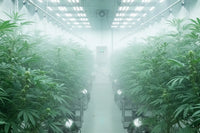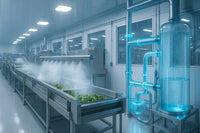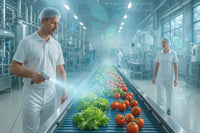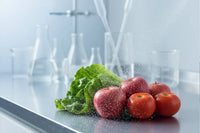When the pandemic first took hold, there was a global shortage of a broad range of cleaning products. These products included toilet paper, dishwashing liquids, hand sanitizers, and cleaning and disinfecting solutions, fluids and sprays. While some households flocked to snap-up highly potent chemical-based products, others turned to stockpiling natural cleaning product brands. The result: A massive shortage of essential cleaning and disinfection supplies.
Ingenuity and Imagination at Work
The shortages in cleaning supplies led to skyrocketing prices. Manufacturers tried their best to ramp up production, but supply chain challenges meant factories couldn’t source vitally required raw materials. But that did not deter consumer’s resolve to fighting COVID-19, and they did whatever it took. Ingenuity and imagination were in high display in the form of:
- Well-thought out product substitutions – people ditched the product they couldn’t find, and turned to other equivalent alternatives.
- Conscientious price comparisons – people switched from high-priced products that were still available, to lower-priced substitutes.
- Change in their cleaning and disinfection protocols in order to use those supplies less liberally.
- The use of scarce products only on high-touch and high-traffic areas, while they cleaned and disinfected other items and places less frequently, which helped keep cost at bay.
These strategies worked well during the pandemic, and some individuals, households, and businesses, continue to stick with them. But, regardless of the modified disinfection protocols you implemented, there is always the risk that you have “compromised” your cleansing and sanitizing rituals. However ingenious and creative your new approach might be, the fact remains:
You are either switching cleaning product quality, volume, frequency, or usage quantities to clean and disinfect the same items, places, and environments as before!
This subtle reality could mean the difference between an effective cleaning and disinfection protocol, and one that still leaves your home, business, and commercial establishment vulnerable to viruses, bacteria, and germs. By switching to homemade natural cleaning products, many residential and commercial consumers have not only continued their “business as usual”, but have also managed to implement “cleansing as usual”. But there’s a downside!
Beware – “Natural” may Not Always Work as Expected!
The use of naturally produced cleaning products is a great way to address several issues that forced us to modify our cleansing and disinfection protocols:
- They’re safe
- They’re made from natural ingredients
- They’re possibly less costly than the chemical-laced alternatives
- They’re available in abundance
While DIY approaches to producing “natural” cleaning solutions are aplenty on the Internet, the truth is that they’re not all very effective. The issue isn’t about not being able to source the ingredients required – though beware, some “recipes” do call for some unusual components! It’s also not about being unable to follow the DIY instructions – though be warned; again, that some of the steps you might have to follow can be risky and dangerous, especially with young kids and vulnerable individuals around!
Producing natural non-toxic cleaning products at home, properly and safely, isn’t something everyone can do. While some individuals are adept at following DIY procedures, most people aren’t inclined to spending the time sourcing the ingredients, measuring proportions, and mixing and combining each component in the required quantities and sequence.
If you are a DIY buff, then here’s something you must keep in mind:
- If you plan on making natural cleaning products at home (or in your office), then be prepared to follow the instructions carefully!
- But first, before you begin measuring, mixing, cooking and baking your products, ensure the source of your DIY recipe is reliable and trustworthy.
Many online DIY blogs carry instructions and recommendations for making homemade cleaning and disinfection products. However, when you dig deeper, you’ll find that the owners, operators, moderators and contributors to those sites aren’t qualified chemists or industrial scientists:
- Typically, the instructions and ingredients on those websites aren’t vetted by professionals qualified to provide such advice and recommendations.
- Often, these websites are paraphrasing similar content from another website – with no attempt to verify or validate the DIY viability and value of what’s recommended.
So, if you plan on going the DIY route, here’s a caution:
Beware – “Natural” may Not Always Work as Expected!
What you produce might not be what you think you are producing. It may not be as efficacious as the product you want. In some instances, it may even be counterproductive, giving you a false sense of “protection”, while in fact, it just doesn’t work! So, is there an alternative – or is DIY really not worth pursuing? Well, when it comes to protecting the health and wellbeing of your home, family, place of business, along with your customers and visitors, it’s important to embrace eco friendly natural cleaning products that truly work.
So, what’s the alternative? It’s an approach that we refer to as a “modified DIY” process, which addresses all the shortcomings of the unverified internet-based DIY approach.
Eco-friendly Cleaning Made Simple
Most people wouldn’t think it worth the time, expense and inconvenience to buy coffee beans, measure them, grind them up, and then produce their favorite brew each time they want their java shot. And that’s exactly how many others feel about making and using natural cleaning and disinfection products.
Thanks to an amazing technological revolution, you can now buy convenient Hypochlorous acid (HOCL) making machines to produce natural, eco-friendly disinfecting and cleansing products at home, in your office, or in your place of business. These are cleansing solutions that perform as good as – and sometimes better than – leading natural cleaning products brands out there.
There’s no measuring and weighing necessary. You don’t need to buy obscure chemicals and powders to get started. And you won’t contaminate your environment with fumes and vapors from the ingredients you use. These HOCL-makers use ordinary, every-day ingredients, namely table salt and water, which are then transformed – safely and securely – into one of the world’s most powerful natural cleansing product and which is then simply plugged into an electrical socket.
Through the process of electrolysis, electricity converts salt and water into a powerful germ and virus killing liquid solution. As small as a coffee maker, or as convenient as a small-sized container, these devices can churn unlimited amounts of disinfectant on demand. For those who wish to continue with their business as usual cleansing protocols, this “modified DIY” approach to homemade natural cleaning products is the perfect solution.
Other Uses of Hypochlorous Acid
We said earlier that hypochlorous acid is a general disinfectant. These are the other things that hypochlorous acid can be used to disinfect:
- Food Produce
- Meat
- Furniture
- Surgical/Medical Equipment
- Livestock
- Water
- Seafood
- Poultry
- Household furniture and fittings
- Toilets and bathrooms, among others.





